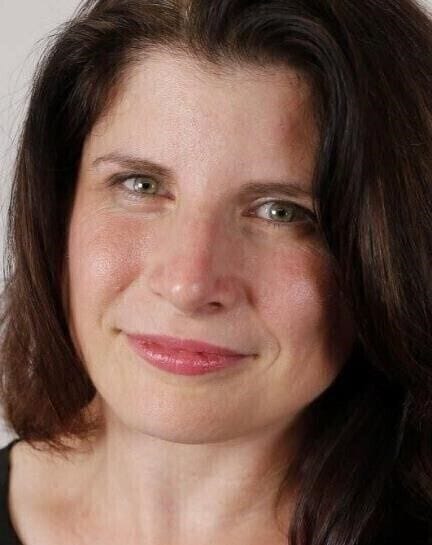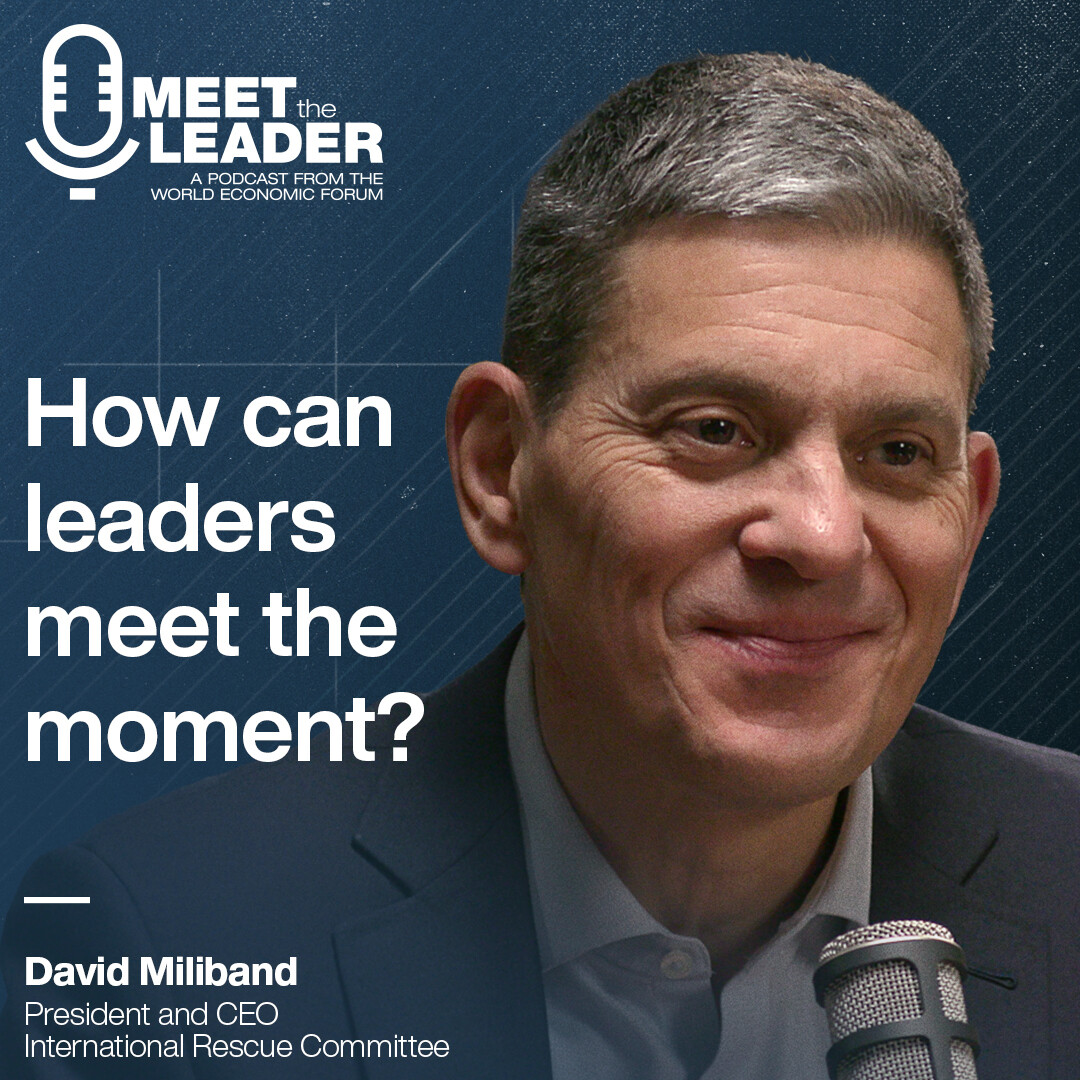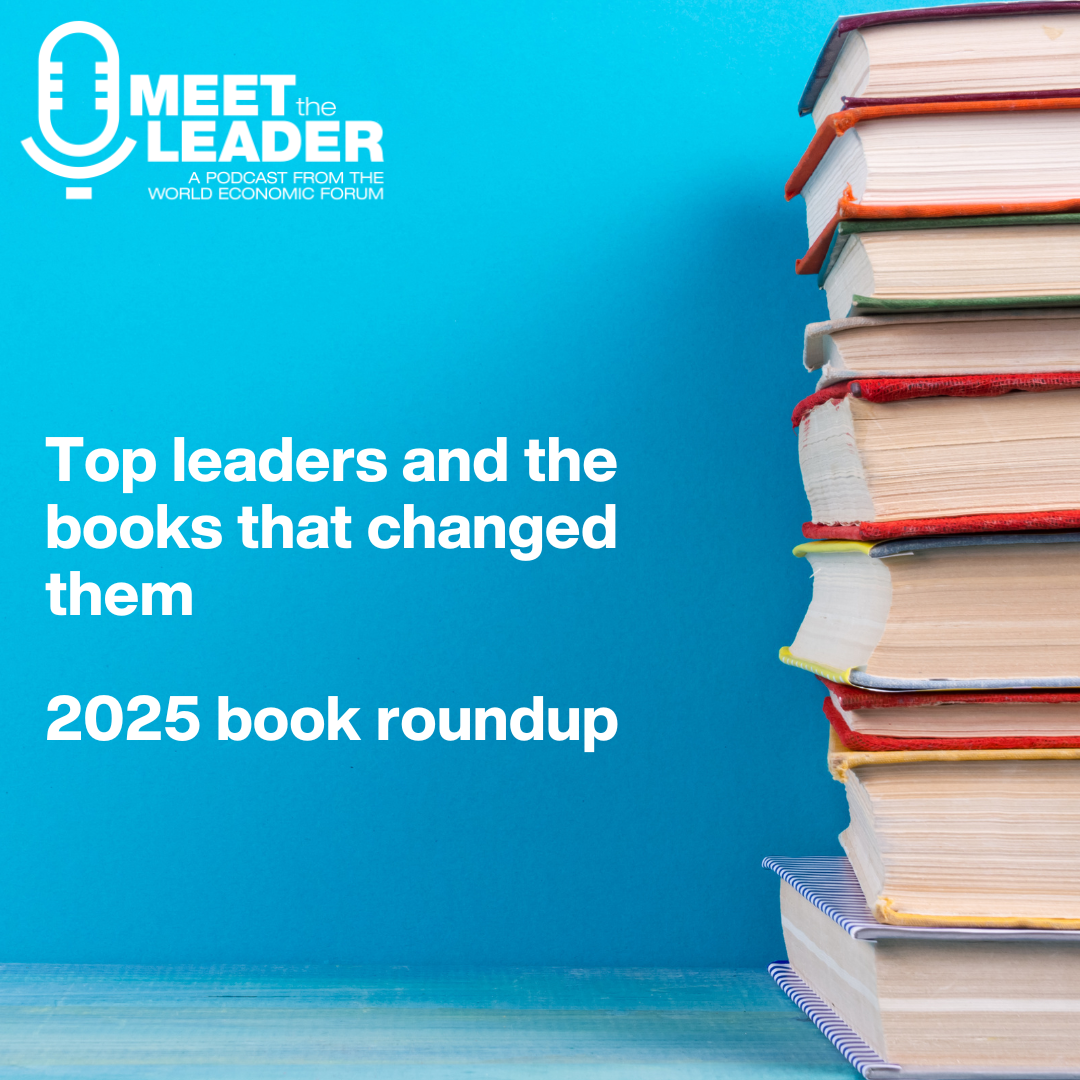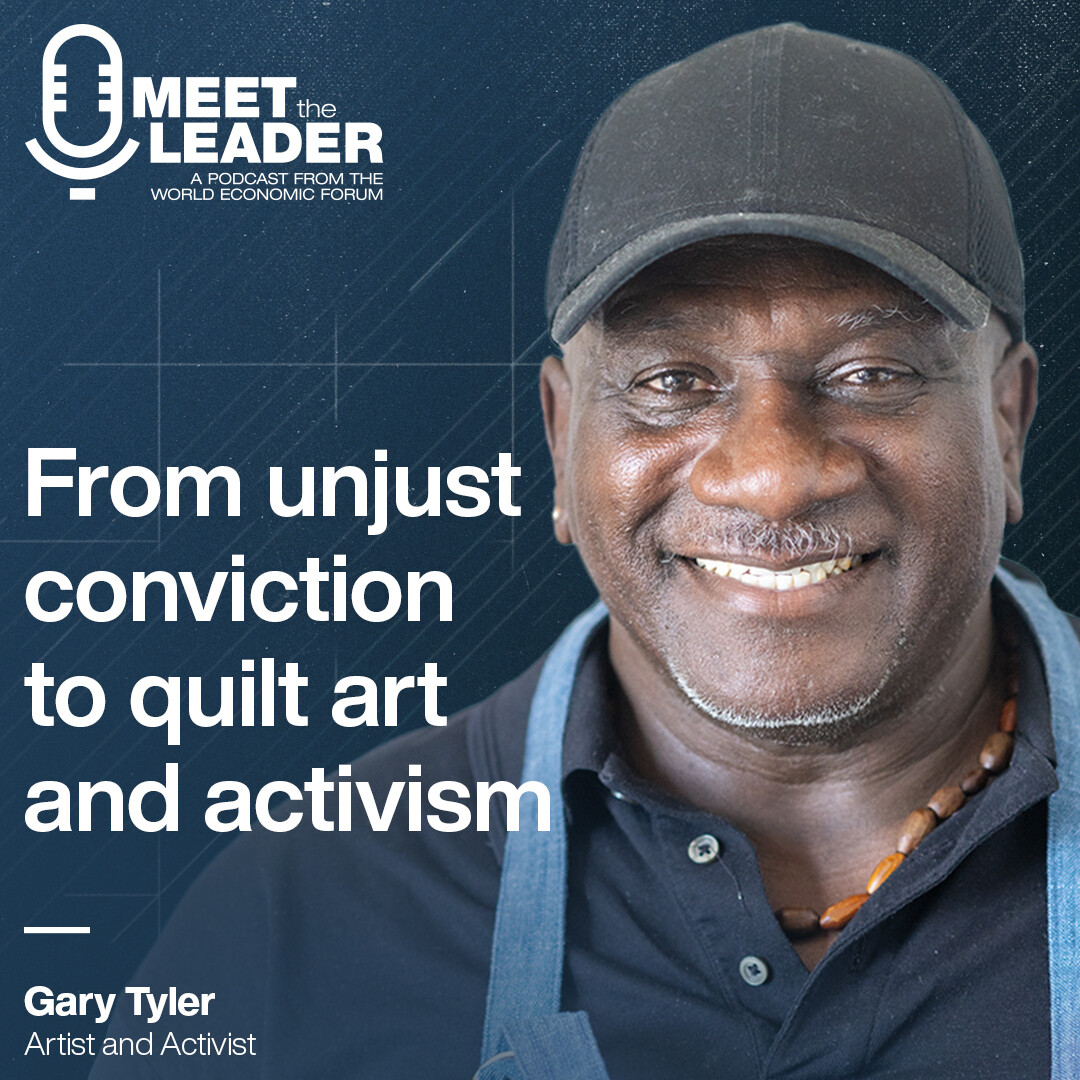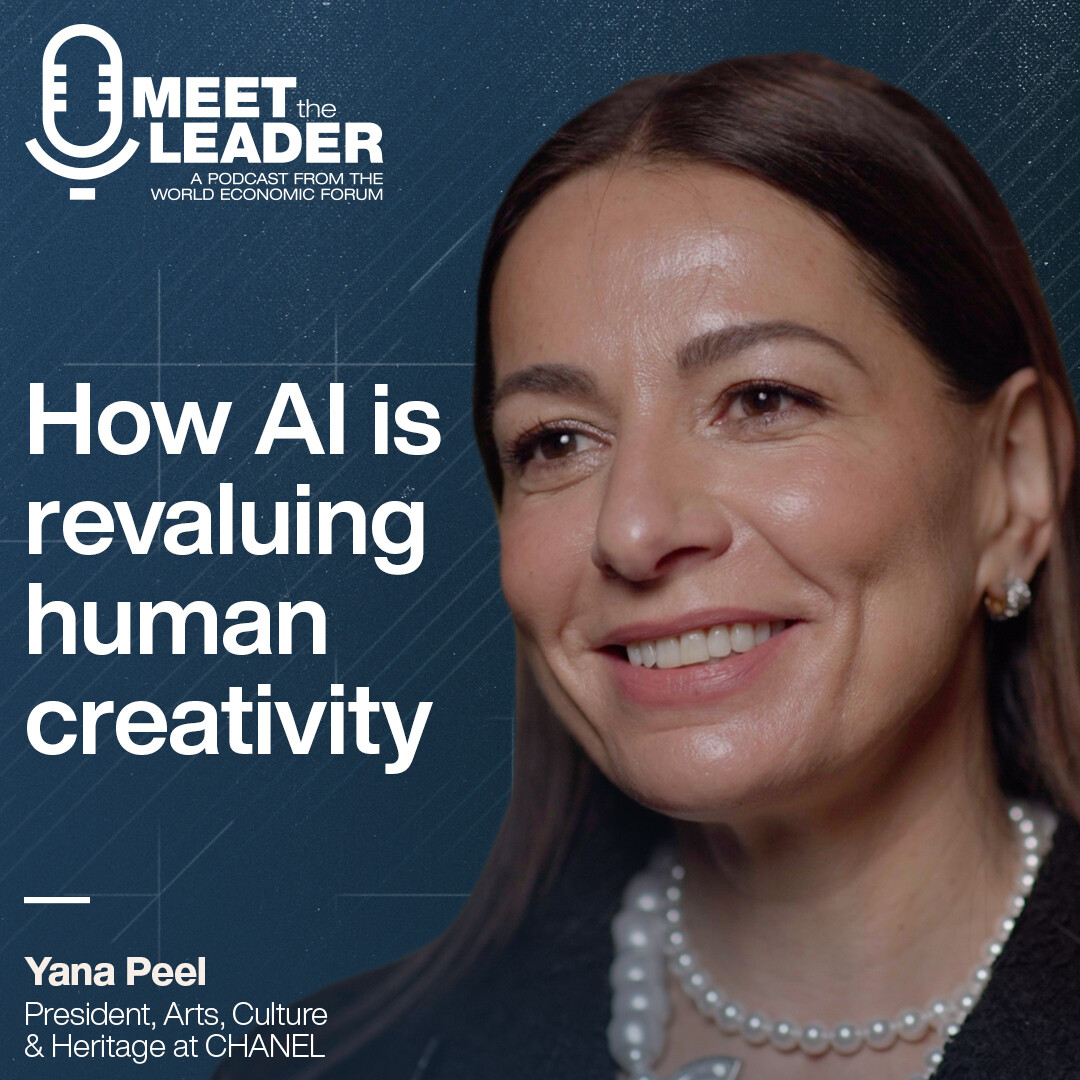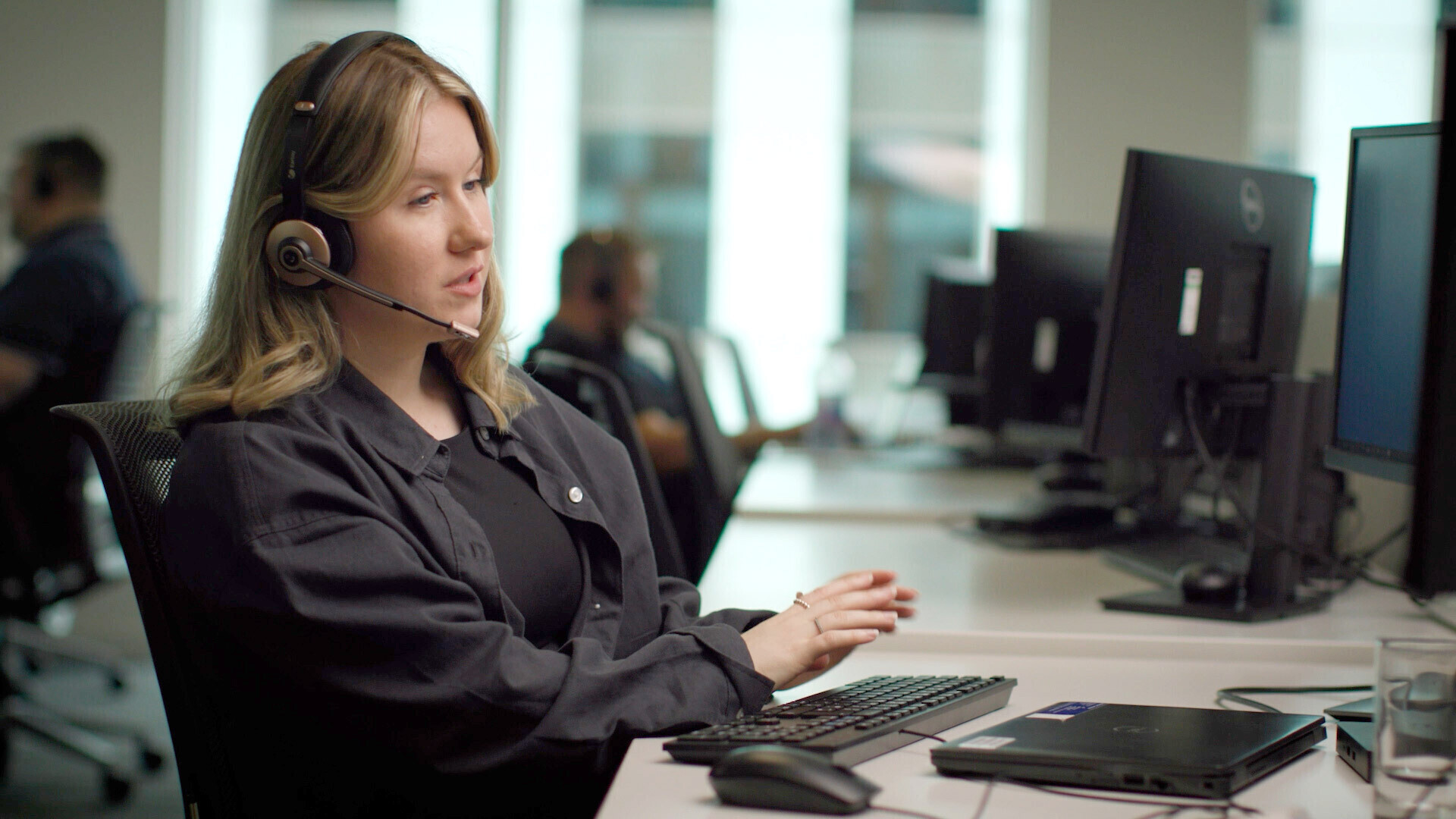3 shifts all effective collaborators make
New approaches to partnering and collaboration will be key to tackling climate action. This will require new mindsets, new systems and connecting with people and groups you might have otherwise overlooked. To better understand how collaboration is evolving, this week’s episode talks to Chief Procurement Offers, leaders who do more than acquire goods and services, but who increasingly work across the business and hold a holistic perspective, exposed to everything from the bottom line to changing trade rules, innovations and shifting geopolitical contexts. They share methods they use to collaborate in new ways -- practices any leader can put to work to push climate action forward.
Transcripción del podcast
Andrea Fuder, Volvo Group Collaboration, collaboration, collaboration. Forget transactional processes. Think in ecosystems. We have to synchronise public and private roadmaps. We have to work internally in the communities but also externally hand in hand to make it happen.
Linda Lacina, Meet The Leader Welcome to Meet the Leader, the podcast where top leaders share how they are tackling the world's toughest challenges. Today we talk about collaboration and the three shifts that every effective collaborator makes.
Subscribe to Meet the Leader on Apple, Spotify and wherever you get your favourite podcasts. And don't forget to rate and review us. I'm Linda Lacina from the World Economic Forum and this is Meet the Leader.
Rachael De Renzy Channer, Egon Zehnder I think there's a certain element of courage that's needed to be a disrupter, to bring this topic and to change business models, to send signals into the market about supply chain and what are expected from from suppliers.
Linda Lacina, Meet The Leader It's a new year, and top leaders are understanding that to tackle complex problems like the climate, we will need new ways of partnering.
Most of us know that those who work well with different groups of people will go the furthest. But what does that look like? How do we scale that thinking? And what does that look like at a block and tackle level? The systems your teams need to have in place, the mindsets that can help them adapt and keep driving forward.
To answer those questions, I talked to a group of people with a unique understanding of how cooperation and partnerships are changing: chief procurement officers. These are leaders you might not think about enough. They're the ones who manage tens of thousands of suppliers every day and help companies acquire goods and services.
But they understand how collaboration is evolving as they work across the business, and they have a holistic perspective that not everyone has. Their decisions impact the bottom line. But now more than ever, their collaborations with suppliers and partners are key to dramatically slashing emissions and speeding action for the climate.
I talked with three procurement officers at our recent Procurement Innovation Summit for the three key shifts that will be critical for effective collaboration right now, and their lessons are key to anyone managing complex problems and driving their organisation forward.
We'll get into all of that. But first, I would like to explain a little more about the role. I'll do that with Volvo Group's Chief Procurement Officer, or CPO, Andrea Fuder. She has one of the best descriptions that I've heard for that role. She likens it to a spider in the web.
Andrea Fuder, Volvo Group We are responsible to manage our supply network. We are responsible to bring innovations for our products. We propose new partners to our engineers. We have to take care that the new products are competitive, that they have the right quality and that they can be produced with the right delivery precision.
So I think people don't understand that purchasing is really heavily integrated in the middle of the company and the business.
As purchasing, you are sitting in the middle of everything. You work with every function in the company. You work heavily internal by that, but also you work with the outside world with many supply partners. You are well aware, for example, about new trade rules. You also have to be very well aware about all the things on the political arena, the macroeconomics around you. You know it all -- you know, what's happening today in all our production plants and you know exactly what projects are in the pipe for the future.
This word, spider in the web, is reflecting exactly that purchasing is in the middle of the company working with all functions, but also being in the middle of everything that is going on today and also in the future. Therefore I like to use this picture of a spider in the web.
Shift #1 Stop thinking in transactions
Linda Lacina, Meet The Leader Now that we have a better sense for the wide perspective that these leaders can have, let's talk about the shifts that make big collaboration work. The first is to stop thinking in transactions. This sort of thinking used to be more commonplace in procurement, but the role is becoming more strategic.
Regardless, we know that transactional thinking is rampant everywhere in business, and it is worth identifying where old rote, one-off approaches can be gotten rid of and consider where we can solve a bigger problem.
Here's Vattenfall's CPO Bjorn Stenecker to explain more.
Björn Stenecker, Vattenfall I would say 10 or 20 years ago it was more very transactional, you know, very commercial driven discussion - what's in it for us as a company, that type of behaviour. Very, very traditional.
Today, as sustainability is such a big part of the agenda you cannot have that type of behaviour. You need to collaborate internally, as I mentioned, with technology, with sustainability, environment and of course, the business, the stakeholders.
But at the same time, also with our suppliers, you cannot just have this strict buyer-seller relationship anymore. You need to find new ways that that calls also for, for a lot of more collaborations.
What all leaders can keep in mind
Linda Lacina, Meet The Leader Still, he stresses that leaders looking to make big change happen have to look beyond the conversation at hand.
Björn Stenecker, Vattenfall We need to leave the traditional transactional way of working together with our suppliers. We need to be a bit more bold and go into joint ventures, into partnership, to make sure that our suppliers dare to dare to invest in green technology that ultimately will benefit us. We cannot just expect them to do that on their own. And then when they're ready, we're going to buy their products or service. So more joint ventures, more partnerships. More collaboration with the suppliers.
Linda Lacina, Meet The Leader But how can you make sure that you're taking these steps seriously? Bjorn shared a very interesting practice that Vattenfall holds at the end of different meetings.
How to check in on collaboration
Björn Stenecker, Vattenfall We have a tradition, at least in Vattenfall, in every major meeting that we have -- every important meeting, like a board meeting or a council meeting -- spending five minutes on were we efficient, were we listening to each other, did we did we make the right decisions? How did we react in general in the meeting?
So we have basically like a checklist and see for green in all these areas. That's one way to learn. Sometimes you know there might be a conflict and sometimes and conflict can be good. But but then of course you need to make sure that you're still listening. And in this, you still are collaborative and try to understand the other. You can be green, but sometimes you you end up in the yellow or red and you learn from that.
Switch #2: Rethink how you work with others
Linda Lacina, Meet The Leader All that brings us to our second key switch: Rethink how you work with others. That could mean partnering with rivals or prioritising working with teams you don't know that much about.
Regardless, the new collaboration will require redrawing any of those old dusty blueprints that you might have for how you think you need to work, all so that you forge new solutions and relationships.
Andrea Fuder talked a little bit more about this with me, as she shared more on Volvo Group's work to embrace fossil free steel. Here's Andrea.
Andrea Fuder, Volvo Group We have a very ambitious target to be to be greenhouse gas neutral, and the whole supply network has to be decarbonised. And I think here we made a very smart move. We have looked to what different materials do we have in our product. And by far number one is steel.
So if we want to take decarbonisation for real then we have to -- we had to start with steel. Therefore, we found partners who have the same mindset like us, who share the same values. And then we were very early out to be in the position to build and bring fossil free components into our products. And this is the way to go.
What all leaders can keep in mind
I think when you go into new areas, you have to understand there is nothing you can compare with. And I think this is also, now for all professional purchasing teams -- what they have to understand, there is not any longer a one size fits all. You cannot work in the same business model. You cannot work transactual. So you have no case by case to set up a partnership agreement, which is really tailored to the case.
And talking about our fossil free steel partnership, this was exactly that. We had no blueprint. We have to develop together agreements where it was a lot more about agreeing on principles than on everything exactly to the point. And this is new for us, but it's by far a lot more fun.
I think you can really leave the rule-based principles. You really feel that what you are doing is going to value creation. You come with a completely different mindset.
And I think this is not only fun. This is purpose. Suddenly working in purchasing is purpose. And I like this a lot. And I know my whole team likes that a lot.
Take the soft skills you've already mastered further
Linda Lacina, Meet The Leader And how can this rethink, redraw, redo mindset take hold? Through classic workplace skills that you have already honed, including communication and courage?
Rachael De Renzy Channer, Egon Zehnder's Global head of responsibility shared a little more.
Rachael De Renzy Channer It is for the new challenges that we're actually facing today, I would say the repertoire of skills and traits are different.
So collaboration -- the skills required to actually work with others is is a key skill that is absolutely required.
Courage: I think there's a certain element of courage that's needed to be a disrupter, to bring this topic, to change business models, to send signals into the market.
ExCo members as well - executive committee - there's a whole element of risk, resilience and opportunity. The procurement officers have a real opportunity to communicate this. So communication is key.
They've probably been more contractual, possibly more transactional, in the past. So this is going to be an evolution of their role. And some of the traits and the characteristics and skills they need to develop are going to be different going forward than they have been in the past.
Shift #3: Solve for the long term
Linda Lacina, Meet The Leader Once you have these partnerships formed, we are ready for our third mindset shift: solving for the long term. Procurement leaders have a bit of an advantage here. They are used to negotiating contracts with sometimes 10 year terms.
You can learn a little something from our procurement leaders here. Because when we solve for the long term, we need to collaborate for the long term. That means bringing people along. It means education and it also means a willingness to accept change that's incremental.
CPO Dan Bartel explains a little bit more about how this worked with suppliers at Schneider Electric and its Zero Carbon project. I'll let him explain.
Dan Bartel, Schneider Electric This is where we are addressing our top 1,000 suppliers and working with them over a period of five years to reduce their carbon emissions by 50%.
it's a journey and you have to bring suppliers along. Well, we start by education, helping the suppliers understand first why we want to do this, why it's important. Right. Second, how to get there. And what we've discovered with those 1,000 suppliers is roughly 700 of them at the beginning had no idea where to begin. They didn't know how to calculate their carbon footprint let alone know which actions they can take to to drive carbon out of their factories and out of their supply chain.
Taking an incremental approach
So we have spent the last several years educating suppliers, helping them calculate their carbon footprint, helping them identify what actions they can take to reduce that footprint, and help them execute along the way. And as a result, so far, we're about two and a half years now into this five-year journey, those suppliers have reduced their carbon by more than 22%. So we're well on our way to achieving that 50% target.
If you come out of the gate with a really ambitious goal and you say you must do this, and the supplier doesn't understand what it takes to get there let alone what the benefit is for their company, you're going to have a long journey, right? So we've tried to take a very incremental approach, starting with, you know, an introduction to the zero carbon project program from our CEO, from myself, from our chief supply chain officer and our chief sustainability officer, to first set the expectation. Then the next step is we just try to get them to agree to try and agree to try to measure your carbon footprint, to try to improve.
Once they get the baseline then we convince them to set a target. Usually those targets are not adequate. They're not coming close to the 50%. But as they go through this journey, lots of training, education support from our sustainability business, from our own sustainability experts in our own factories. Ultimately, we find that most companies can get close, if not surpass those targets.
This is, I guess, the the beauty of having a long term target is you have time to get there. And it takes the pressure off a little bit in the short term. Because when we started, it was a five year target - five years from now, we want to have a reduction of 50% in our scope three carbon.
In the first year, we weren't under a ton of pressure to show results because we knew we had to educate. We had to prepare ourselves. Right. With respect to to buyers themselves, you know, we're very driven people. We want to drive a KPI. So we try to set KPIs for each stage of that process. So how many suppliers have committed to join? How many suppliers have established their baseline, how many suppliers have engaged in actions? And, uh, ultimately, what is the percentage of reduction we're achieving.
Linda Lacina, Meet The Leader Education is all well and good, but you need to reinforce what people have learned and help scale that change further. Schnieder Electric does this through special "acceleration events" that help swap and build on best practices all while keeping people excited. I'll let Dan explain more.
Events to swap best practices, build on excitement
Dan Bartel, Schneider Electric With these acceleration events where we bring together anywhere from about 20 to 40 suppliers. We bring to the table our sustainability experts, we bring to the table our sustainability consultants. Even some third parties, that are experts on carbon reduction for that particular industry, for that particular geography and put them into workshops together to find the actions to reduce carbon.c
And the first day is a sharing of here's all the best practices that can be put on the table, and suppliers are participating in that.
And then the second day, we set up one-on-one exchanges between our suppliers and the sustainability experts of Schneider Electric, where they hammer out their action plans. And then usually within 2 or 3 weeks after the event, the suppliers have established themselves a new target because they've had a breakthrough on their level of understanding of what's possible.
And we found with those events that, fairly consistently, the suppliers are committing to levels of reduction that are roughly in line with our targets, but really that it was getting those events, having those face-to-face exchanges, spending two days together, nobody wants to squander that time, they want to get something out of it. And that's what's made the difference, I think, in the Zero Carbon Project.
Linda Lacina, Meet The Leader This approach helps to build excitement and make people want to dig in even more on the change.
Dan Bartel, Schneider Electric When you come together and rally around something that's really difficult to achieve and you, work together and collaborate to find solutions, you get energy from that.
You know, we've done a number of other events with our suppliers, whether it's around innovation, around resilience, around technological development, even innovating for cost reduction, where we have events. And when you bring suppliers from multiple domains together, multiple categories, even multiple geographies, and you put them in a room with the same problem to solve, you end up learning from each other and coming up with some really creative ideas.
So I think just having that teaming approach together between, not just between Schneider Electric and suppliers, but also our R&D organisations as well, at the table.
And when you have your purpose strongly rooted in something that really matters to you and you have a strong alignment between your own personal values and the values of your company, whatever you embark on doing and doing together, you're probably going to go farther than if you didn't have that connection.
Ask yourself: What's your legacy?
Linda Lacina, Meet The Leader Of course, small actions over the long term can be daunting, but if you're looking to keep big teams on track, you can do it with one key question: what's our legacy. That can be clarifying for different groups of internal and external folks alike, all to keep the shared big picture in mind.
Dan Bartel, Schneider Electric Earlier this year I turned 50. When you reach a milestone like that, you start to think about, what's the legacy that you're leaving behind.
I've had a very long and successful career in procurement. I have a lot of things that I've accomplished that I'm very proud of.
But in recent months, I've started to think about what is my legacy going to be? What what am I going to be remembered for professionally? Do I want it to be that saved a lot of money? That would be nice, I guess. But I'd much rather have a legacy of making a difference in the world, whether environmentally or socially.
So my advice, I think, to other CPOs, is to to pause and think about that, really think about how you want to be remembered. And when you do, I think a lot of people are going to land on wanting to make more of a difference. So take that feeling and translate it into action and set much higher ambitions. Put more effort into convincing your counterparts in the leadership of your company to be much more ambitious with respect to our social and environmental goals.
Linda Lacina, Meet The Leader And Andrea Fuder agrees.
Andrea Fuder, Volvo Group At the end of the day, you should ask yourself every day in everything that you do: Am I creating value in what I'm doing, or am I'm doing something which has really no value at all?
And I think organisations who go from rule-base to value-based, who allows people to reflect on if the top creates value, if it is important for the customer, if it is important for the company, if it is important for the society, these are the companies who really understand that the most important asset are the people. And when you use them in the best way, then you are a winning team.
Linda Lacina, Meet The Leader And those are the three mindset shifts that all effective collaborators make.
This episode of Meet the Leader was presented and produced by me, with Taz Kelleher as editor and Gareth Nolan driving studio production.
That's it for now. I'm Linda Lacina with the World Economic Forum. Have a great day.
Alojado por:
Temas:
LiderazgoMás episodios:
Más sobre LiderazgoVer todo
Sebastian Buckup and Maximilian Martin
2 de diciembre de 2025
